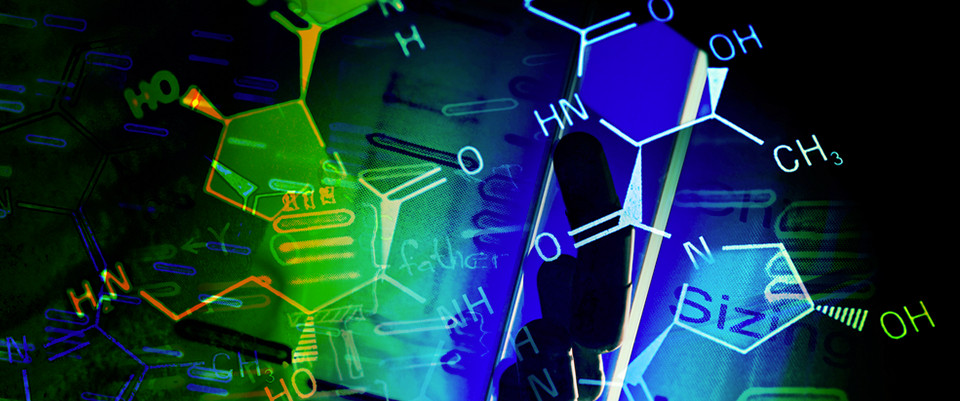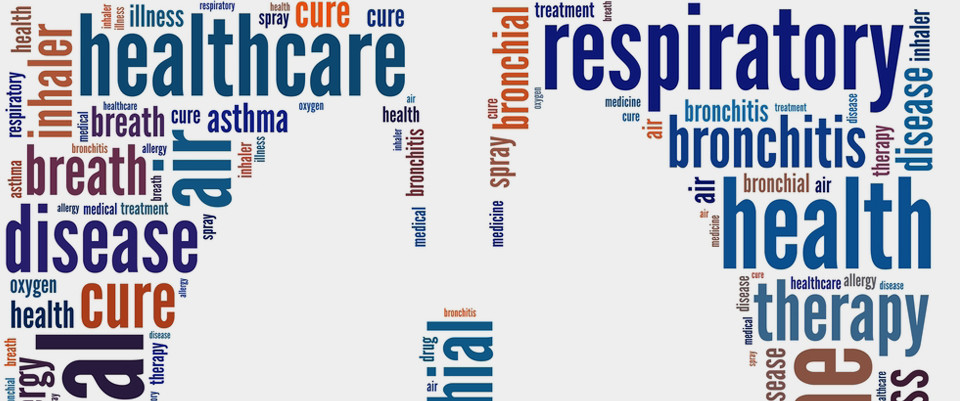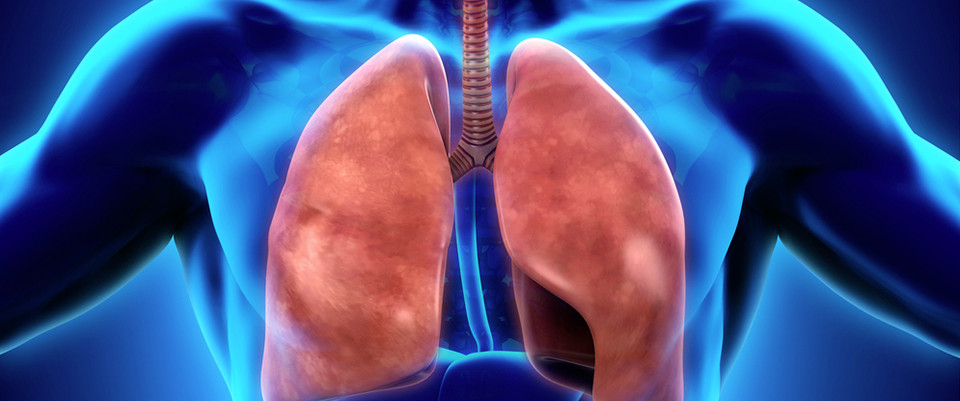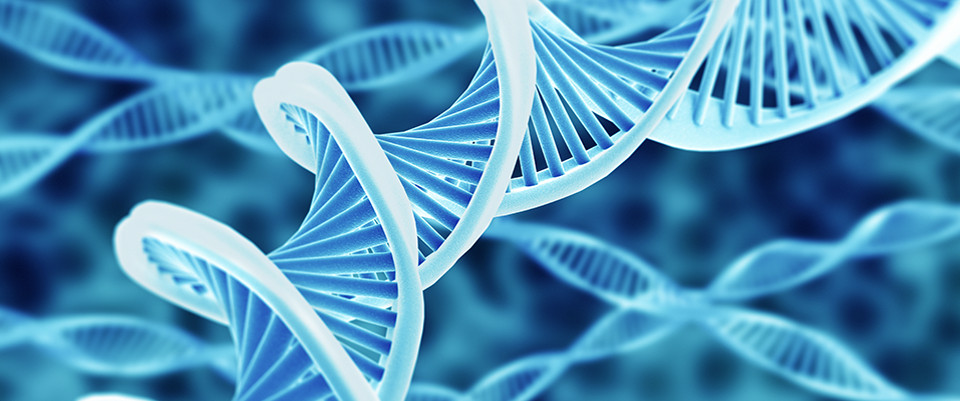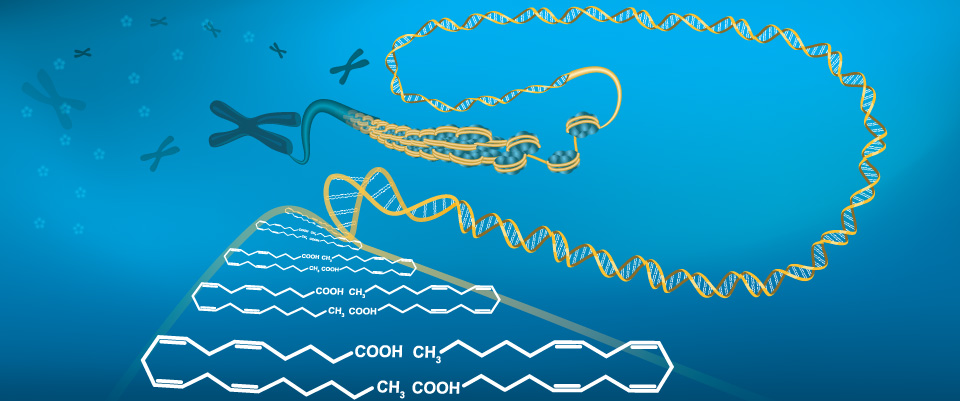PubMed
Exposure to polylactic acid induces oxidative stress and reduces the ceramide levels in larvae of greater wax moth (Galleria mellonella)
Environ Res. 2022 Dec 20:115137. doi: 10.1016/j.envres.2022.115137. Online ahead of print.ABSTRACTPlastic biodegradation by insects has made significant progress, opening up new avenues for the treatment of plastic waste. Wax moth larvae, for example, have attracted the attention of the scientific community because they are known to chew, ingest, and biodegrade natural polymer bee waxes. Despite this, we know very little about how these insects perform on manufactured plastics or how manufactured plastics affect insect metabolism. As a result, we studied the metabolism of greater wax moths (Galleria mellonela) fed on molasses-supplemented polylactic acid plastic (PLA) blocks. An analysis of the central carbon metabolism (CCM) metabolites was performed using liquid chromatography triple quadrupole mass spectrometry (LC-QQQ-MS), while an analysis of untargeted metabolites and lipidomics was conducted using liquid chromatography quadrupole time-of-flight mass spectrometry (LC-QToF-MS). In total, 169 targeted CCM metabolites, 222 untargeted polar metabolites, and 196 untargeted polar lipids were identified within the insect samples. In contrast, compared to control larvae, PLA-fed larvae displayed significantly different levels of 97 CCM metabolites, 75 polar metabolites, and 57 lipids. Purine and pyrimidine metabolisms were affected by PLA feeding, as well as amino acid metabolism, carbohydrates, cofactors, vitamins, and related metabolisms. Additionally, PLA exposure disrupted insect energy metabolism and oxidative stress, among other metabolic disturbances. The larvae fed PLA have lower levels of several lipids, suggesting a reduction in lipid reserves, and ceramide levels are likely to have changed due to apoptosis and inflammation. The study indicates that G. mellonela larvae could ingest PLA, but this process causes some metabolic stress for the host. Future studies of the molecular pathways of this biodegradation process might help to provide strategies for stress reduction that would speed up insect digestion of plastic.PMID:36563977 | DOI:10.1016/j.envres.2022.115137
Normalization of organ-on-a-Chip samples for mass spectrometry based proteomics and metabolomics via Dansylation-based assay
Toxicol In Vitro. 2022 Dec 20:105540. doi: 10.1016/j.tiv.2022.105540. Online ahead of print.ABSTRACTMass spectrometry based 'omics pairs well with organ-on-a-chip-based investigations, which often have limited cellular material for sampling. However, a common issue with these chip-based platforms is well-to-well or chip-to-chip variability in the proteome and metabolome due to factors such as plate edge effects, cellular asynchronization, effluent flow, and limited cell count. This causes high variability in the quantitative multi-omics analysis of samples, potentially masking true biological changes within the system. Solutions to this have been approached via data processing tools and post-acquisition normalization strategies such as constant median, constant sum, and overall signal normalization. Unfortunately, these methods do not adequately correct for the large variations, resulting in a need for increased biological replicates. The methods in this work utilize a dansylation based assay with a subset of labeled metabolites that allow for pre-acquisition normalization to better correlate the biological perturbations that truly occur in chip-based platforms. BCA protein assays were performed in tandem with a proteomics pipeline to achieve pre-acquisition normalization. The CN Bio PhysioMimix was seeded with primary hepatocytes and challenged with VX after six days of culture, and the metabolome and proteome were analyzed using the described normalization methods. A decreased coefficient of variation percentage is achieved, significant changes are observed through the proteome and metabolome, and better classification of biological replicates acquired because of these strategies.PMID:36563973 | DOI:10.1016/j.tiv.2022.105540
Study on the mechanism of Fufang E'jiao Jiang on precancerous lesions of gastric cancer based on network pharmacology and metabolomics
J Ethnopharmacol. 2022 Dec 20:116030. doi: 10.1016/j.jep.2022.116030. Online ahead of print.ABSTRACTETHNOPHARMACOLOGICAL RELEVANCE: Fufang E'jiao Jiang (FEJ) is a prominent traditional Chinese medicine prescription, which consists of Asini Corii Colla (Donkey-hide gelatin prepared by stewing and concentrating from the hide of Equus asinus Linnaeus., ACC), Codonopsis Radix (the dried roots of Codonopsis pilosula (Franch.) Nannf., CR), Ginseng Radix et Rhizoma Rubra (the steamed and dried root of Panax ginseng C.A. Mey., GRR), Crataegi Fructus (the mature fruits of Crataegus pinnatifida Bunge., CF), and Rehmanniae Radix Praeparata (the steamed and sun dried tuber of Rehmannia glutinosa (Gaertn.) Libosch. ex Fisch. & C.A. Mey., RRP). It is a popularly used prescription for "nourishing Qi and nourishing blood".AIM OF THE STUDY: To explore the potential mechanism of FEJ on precancerous lesion of gastric cancer in rats by combining network pharmacology and metabolomics.METHODS: Traditional Chinese Medicine Systems Pharmacology and Bioinformatics Analysis Tool for Molecular mechanism of Traditional Chinese Medicine were used to identify the ingredients and potential targets of FEJ. GeneCards database was used to define PLGC-associated targets. We built a herb-component-disease-target network and analyzed the protein-protein interaction network. Underlying mechanisms were identified using Kyoto Encyclopedia of Genes and Genomes pathway enrichment analysis. In addition, 40% ethanol, N-methyl-N'-nitro-N-nitroguanidine and irregular eating were used to establish PLGC rats model. We also evaluated the efficacy of FEJ on MNNG-induced PLGC rats by body weight, histopathology, blood routine and cytokine levels, while the predicted pathway was determined by the Western blot. Ultra-performance liquid chromatography-tandem mass spectrometry-based serum non-targeted metabolomics was used to select potential biomarkers and relevant pathways for FEJ in the treatment of PLGC.RESULTS: Network pharmacology showed that FEJ exhibited anti-PLGC effects through regulating ALB, TNF, VEGFA, TP53, AKT1 and other targets, and the potential pathways mainly involved cancer-related, TNF, PI3K-AKT, HIF-1, and other signaling pathways. Animal experiments illustrated that FEJ could suppress inflammation, regulate gastrointestinal hormones, and inhibit the expression of PI3K/AKT/HIF-1α pathway-related proteins. Based on serum non-targeted metabolomics analysis, 12 differential metabolites responding to FEJ treatment were identified, and metabolic pathway analysis showed that the role of FEJ was concentrated in 6 metabolic pathways.CONCLUSION: Based on network pharmacology, animal experiments and metabolomics, we found that FEJ might ameliorate gastric mucosal injury in PLGC rats by regulating gastrointestinal hormones and inhibiting inflammation, and its mechanism of action is related to the inhibition of excessive activation of PI3K/AKT/HIF-1α signaling pathway and regulation of disorders of body energy metabolism. This comprehensive strategy also provided a reasonable way for unveiling the pharmacodynamic mechanisms of multi-components, multi-targets, and multi-pathways in Traditional Chinese Medicine.PMID:36563889 | DOI:10.1016/j.jep.2022.116030
Deferasirox alleviates DSS-induced ulcerative colitis in mice by inhibiting ferroptosis and improving intestinal microbiota
Life Sci. 2022 Dec 20:121312. doi: 10.1016/j.lfs.2022.121312. Online ahead of print.ABSTRACTAIMS: Ulcerative colitis (UC) is a chronic inflammatory bowel disease (IBD) caused by multiple factors. Studies have shown that epithelial cell damage was associated with ferroptosis in UC. Therefore, our research focused on the effects and mechanism of iron chelator deferasirox in UC.MAIN METHODS: The UC model was induced by 2.5 % dextran sulfate sodium salt (DSS) and administered with deferasirox (10 mg/kg) for 7 days. Histological pathologies, inflammatory response, ferrous iron contents, oxidative stress and ferroptosis regulators were determined. Intestinal microbiota alteration and short-chain fatty acids (SCFAs) production were analyzed through 16S rRNA gene sequencing and targeted metabolomics.KEY FINDINGS: Deferasirox significantly relieved the DSS-induced UC in mice, as evidenced by weight loss, survival rate, colon length shortening disease activity index (DAI) score and histology score. Deferasirox treatment reduced the level of pro inflammatory cytokines (IL-1β, IL-6, TNF-α and INF-γ). Ferroptosis was induced in mice with UC, as evidenced by ferrous iron accumulation, increased ROS production, SOD and GSH depletion, decreased the expression of GPX-4 and FTH, accompanied by increased expression of TF. Deferasirox treatment strongly reversed the alterations caused by ferroptotic characteristics in DSS-induced mice. Moreover, deferasirox treatment reshaped the composition of intestinal microbiota. The results revealed the genera of norank_f__Muribaculaceae, Lachnospiraceae_NK4A136_group, Prevotellaceae_UCG-001, Odoribacter and Blautia were increased distinctly, while Escherichia-Shigella and Streptococcus were significantly decreased by deferasirox treatment. Targeted metabolomics analysis indicated the SCFAs production enhanced in deferasirox-treated mice.SIGNIFICANCE: Our results suggested that deferasirox could treat DSS-induced UC in mice by inhibiting ferroptosis and improving intestinal microbiota.PMID:36563842 | DOI:10.1016/j.lfs.2022.121312
Diagnostic metabolomic profiling of Parkinson's disease biospecimens
Neurobiol Dis. 2022 Dec 20:105962. doi: 10.1016/j.nbd.2022.105962. Online ahead of print.ABSTRACTBACKGROUND: Reliable and sensitive biomarkers are needed for enhancing and predicting Parkinson's disease (PD) diagnosis.OBJECTIVE: To investigate comprehensive metabolomic profiling of biochemicals in CSF and serum for determining diagnostic biomarkers of PD.METHODS: Fifty subjects, symptomatic with PD for ≥5 years, were matched to 50 healthy controls (HCs). We used ultrahigh-performance liquid chromatography linked to tandem mass spectrometry (UHPLC-MS/MS) for measuring relative concentrations of ≤1.5 kDalton biochemicals. A reference library created from authentic standards facilitated chemical identifications. Analytes underwent univariate analysis for PD association, with false discovery rate-adjusted p-value (≤0.05) determinations. Multivariate analysis (for identifying a panel of biochemicals discriminating PD from HCs) used several biostatistical methods, including logistic LASSO regression.RESULTS: Comparing PD and HCs, strong differentiation was achieved from CSF but not serum specimens. With univariate analysis, 21 CSF compounds exhibited significant differential concentrations. Logistic LASSO regression led to selection of 23 biochemicals (11 shared with those determined by the univariate analysis). The selected compounds, as a group, distinguished PD from HCs, with Area-Under-the-Receiver-Operating-Characteristic (ROC) curve of 0.897. With optimal cutoff, logistic LASSO achieved 100% sensitivity and 96% specificity (and positive and negative predictive values of 96% and 100%). Ten-fold cross-validation gave 84% sensitivity and 82% specificity (and 82% positive and 84% negative predictive values). From the logistic LASSO-chosen regression model, 2 polyamine metabolites (N-acetylcadaverine and N-acetylputrescine) were chosen and had the highest fold-changes in comparing PD to HCs. Another chosen biochemical, acisoga (N-(3-acetamidopropyl)pyrrolidine-2-one), also is a polyamine metabolism derivative.CONCLUSIONS: UHPLC-MS/MS assays provided a metabolomic signature highly predictive of PD. These findings provide further evidence for involvement of polyamine pathways in the neurodegeneration of PD.PMID:36563791 | DOI:10.1016/j.nbd.2022.105962
A retro-inverso modified peptide alleviated ovalbumin-induced asthma model by affecting glycerophospholipid and purine metabolism of immune cells
Pulm Pharmacol Ther. 2022 Dec 20:102185. doi: 10.1016/j.pupt.2022.102185. Online ahead of print.ABSTRACTAllergic asthma is a heterogeneous disease involving a variety of inflammatory cells. Immune imbalance or changes in the immune microenvironment are the essential causes that promote inflammation in allergic asthma. Tetraspanin CD81 can be used as a platform for receptor clustering and signal transmission owing to its special transmembrane structure and is known to participate in the physiological processes of cell proliferation, differentiation, adhesion, and migration. Previous studies have shown that CD81-targeting peptidomimetics exhibit anti-allergic lung inflammation. However, due to the low metabolic stability of peptide drugs, their druggability is limited. Here, we aimed to generate a metabolically stable anti-CD81 peptide, evaluate its anti-inflammatory action and establish its mechanism of action. Based on previous reports, we applied retro-inverse peptide modification to obtain a new compound, PD00 (NH2-D-Gly-D-Ser-D-Thr-D-Tyr-D-Thr-D-Gln-D-Gly-COOH), with high metabolic stability. Enhanced ultraperformance liquid chromatography-tandem mass spectrometry was used to investigate the in vitro and in vivo metabolic stabilities of PD00. The affinities of PD00 and CD81 were studied using molecular docking and surface plasmon resonance techniques. An ovalbumin (OVA)-induced asthma model was used to evaluate the effects of PD00 in vivo. Mice were treated with different concentrations of PD00 (175 and 350 μg/kg) for 10 days. Airway hyperresponsiveness (AHR) to acetyl-β-methacholine (Mch), inflammatory cell counts in the bronchoalveolar lavage fluid, and serum OVA-specific IgE levels were detected in the mice at the end of the experiment. Lung tissues were collected for haematoxylin and eosin staining, untargeted metabolomic analysis, and single-cell transcriptome sequencing. PD00 has a high affinity for CD81; therefore, administration of PD00 markedly ameliorated AHR and airway inflammation in mice after OVA sensitisation and exposure. Serum OVA-specific IgE levels decreased considerably. In addition, PD00 treatment increased glycerophospholipid and purine metabolism in immune cells. Collectively, PD00 may regulate the glycerophospholipid and purine metabolism pathways to ameliorate the pathophysiological features of asthma. These findings suggest that PD00 is a potential compound for the treatment of asthma.PMID:36563740 | DOI:10.1016/j.pupt.2022.102185
Histopathologic and proteogenomic heterogeneity reveals features of clear cell renal cell carcinoma aggressiveness
Cancer Cell. 2022 Dec 20:S1535-6108(22)00565-7. doi: 10.1016/j.ccell.2022.12.001. Online ahead of print.ABSTRACTClear cell renal cell carcinomas (ccRCCs) represent ∼75% of RCC cases and account for most RCC-associated deaths. Inter- and intratumoral heterogeneity (ITH) results in varying prognosis and treatment outcomes. To obtain the most comprehensive profile of ccRCC, we perform integrative histopathologic, proteogenomic, and metabolomic analyses on 305 ccRCC tumor segments and 166 paired adjacent normal tissues from 213 cases. Combining histologic and molecular profiles reveals ITH in 90% of ccRCCs, with 50% demonstrating immune signature heterogeneity. High tumor grade, along with BAP1 mutation, genome instability, increased hypermethylation, and a specific protein glycosylation signature define a high-risk disease subset, where UCHL1 expression displays prognostic value. Single-nuclei RNA sequencing of the adverse sarcomatoid and rhabdoid phenotypes uncover gene signatures and potential insights into tumor evolution. In vitro cell line studies confirm the potential of inhibiting identified phosphoproteome targets. This study molecularly stratifies aggressive histopathologic subtypes that may inform more effective treatment strategies.PMID:36563681 | DOI:10.1016/j.ccell.2022.12.001
Mobile genetic elements from the maternal microbiome shape infant gut microbial assembly and metabolism
Cell. 2022 Dec 22;185(26):4921-4936.e15. doi: 10.1016/j.cell.2022.11.023.ABSTRACTThe perinatal period represents a critical window for cognitive and immune system development, promoted by maternal and infant gut microbiomes and their metabolites. Here, we tracked the co-development of microbiomes and metabolomes from late pregnancy to 1 year of age using longitudinal multi-omics data from a cohort of 70 mother-infant dyads. We discovered large-scale mother-to-infant interspecies transfer of mobile genetic elements, frequently involving genes associated with diet-related adaptations. Infant gut metabolomes were less diverse than maternal but featured hundreds of unique metabolites and microbe-metabolite associations not detected in mothers. Metabolomes and serum cytokine signatures of infants who received regular-but not extensively hydrolyzed-formula were distinct from those of exclusively breastfed infants. Taken together, our integrative analysis expands the concept of vertical transmission of the gut microbiome and provides original insights into the development of maternal and infant microbiomes and metabolomes during late pregnancy and early life.PMID:36563663 | DOI:10.1016/j.cell.2022.11.023
Microbial spoilage mechanisms of vacuum-packed lamb meat: A review
Int J Food Microbiol. 2022 Dec 9;387:110056. doi: 10.1016/j.ijfoodmicro.2022.110056. Online ahead of print.ABSTRACTLamb meat is an important export commodity, however chilled vacuum-packed (VP) lamb has approximately half the shelf-life of beef under the same storage conditions. This makes the industry more vulnerable to financial losses due to long shipping times and unexpected spoilage. Understanding the spoilage mechanisms of chilled VP lamb in relation to VP beef is important for developing effective strategies to extend the shelf-life of lamb. This review has discussed various key factors (i.e., pH, fat, and presence of bone) that have effects on microbial spoilage of VP lamb contributing to its shorter shelf-life relative to VP beef. A range of bacterial organisms and their metabolisms in relevance to lamb spoilage are also discussed. The data gap in the literature regarding the potential mechanisms of spoilage in VP red meat is highlighted. This review has provided the current understanding of key factors affecting the shelf-life of VP lamb relative to VP beef. It has also identified key areas of research to further understand the spoilage mechanisms of VP lamb. These include investigating the potential influence of fat and bone (including bone marrow) on the shelf-life, as well as assessing changes in the meat metabolome as the spoilage microbial community is developing using an integrated approach. Such new knowledge would aid the development of effective approaches to extend the shelf-life of VP lamb.PMID:36563532 | DOI:10.1016/j.ijfoodmicro.2022.110056
Assessment of exposure to pesticide mixtures in five European countries by a harmonized urinary suspect screening approach
Int J Hyg Environ Health. 2022 Dec 21;248:114105. doi: 10.1016/j.ijheh.2022.114105. Online ahead of print.ABSTRACTHumans are exposed to a mixture of pesticides through diet as well as through the environment. We conducted a suspect-screening based study to describe the probability of (concomitant) exposure to a set of pesticide profiles in five European countries (Latvia, Hungary, Czech Republic, Spain and the Netherlands). We explored whether living in an agricultural area (compared to living in a peri-urban area), being a a child (compared to being an adult), and the season in which the urine sample was collected had an impact on the probability of detection of pesticides (-metabolites). In total 2088 urine samples were collected from 1050 participants (525 parent-child pairs) and analyzed through harmonized suspect screening by five different laboratories. Fourty pesticide biomarkers (either pesticide metabolites or the parent pesticides as such) relating to 29 pesticides were identified at high levels of confidence in samples across all study sites. Most frequently detected were biomarkers related to the parent pesticides acetamiprid and chlorpropham. Other biomarkers with high detection rates in at least four countries related to the parent pesticides boscalid, fludioxonil, pirimiphos-methyl, pyrimethanil, clothianidin, fluazifop and propamocarb. In 84% of the samples at least two different pesticides were detected. The median number of detected pesticides in the urine samples was 3, and the maximum was 13 pesticides detected in a single sample. The most frequently co-occurring substances were acetamiprid with chlorpropham (in 62 urine samples), and acetamiprid with tebuconazole (30 samples). Some variation in the probability of detection of pesticides (-metabolites) was observed with living in an agricultural area or season of urine sampling, though no consistent patterns were observed. We did observe differences in the probability of detection of a pesticide (metabolite) among children compared to adults, suggesting a different exposure and/or elimination patterns between adults and children. This survey demonstrates the feasibility of conducting a harmonized pan-European sample collection, combined with suspect screening to provide insight in the presence of exposure to pesticide mixtures in the European population, including agricultural areas. Future improvements could come from improved (harmonized) quantification of pesticide levels.PMID:36563507 | DOI:10.1016/j.ijheh.2022.114105
Intratumor microbiome features reveal antitumor potentials of intrahepatic cholangiocarcinoma
Gut Microbes. 2023 Jan-Dec;15(1):2156255. doi: 10.1080/19490976.2022.2156255.ABSTRACTIntrahepatic cholangiocarcinoma (ICC) is a rare malignancy with a high prevalence in China. This study aimed to characterize the ICC tissues' bacterial metagenomics signature and explore its antitumor potential for cancer. In this study, 16S rRNA sequencing was carried out on 99 tissues to characterize the features of intratumoral microbiota, followed by single-cell RNA sequencing (scRNA-seq) and multilevel validation. The presence of microbial DNA in tissues was determined using staining, fluorescence in situ hybridization (FISH), and transmission electron microscopy (TEM). A Gram-positive aerobic bacterium, identified as Staphylococcus capitis, was cultured from fresh tissues. Meanwhile, scRNA-seq showed that intratumoral bacteria could be present in multiple cell types. Using 16S rRNA sequencing, we identified a total of 2,320,287 high-quality reads corresponding to 4,594 OTU (operational taxonomic units) sequences. The most abundant bacterial orders include Burkholderiales, Pseudomonadales, Xanthomonadales, Bacillales and Clostridiales. Alpha and Beta diversity analysis revealed specific features in different tissues. In addition, the content of Paraburkholderia fungorum was significantly higher in the paracancerous tissues and negatively correlated with CA199 (Carbohydrate antigen199) levels. The results of in vitro and in vivo experiments suggest that P. fungorum possesses an antitumor activity against tumors. Metabolomics and transcriptomics showed that P. fungorum could inhibit tumor growth through alanine, aspartate and glutamate metabolism. We determined the characteristic profile of the intratumoral microbiota and the antitumor effect of P. fungorum in ICC.PMID:36563106 | DOI:10.1080/19490976.2022.2156255
An integrated study on the comprehensive mechanism of <em>Schisandra chinensis</em> polysaccharides mitigating Alzheimer's disease in rats using a UPLC-Q-TOF-MS based serum and urine metabolomics strategy
Food Funct. 2022 Dec 23. doi: 10.1039/d2fo02842e. Online ahead of print.NO ABSTRACTPMID:36562313 | DOI:10.1039/d2fo02842e
Zhizhu decoction alleviates slow transit constipation by regulating aryl hydrocarbon receptor through gut microbiota
Pharm Biol. 2023 Dec;61(1):111-124. doi: 10.1080/13880209.2022.2157020.NO ABSTRACTPMID:36562308 | DOI:10.1080/13880209.2022.2157020
The impact of letrozole on oocyte quality in assisted reproductive technology (ART); a randomized double-blind clinical trial
Gynecol Endocrinol. 2022 Dec 23:1-6. doi: 10.1080/09513590.2022.2160869. Online ahead of print.NO ABSTRACTPMID:36562249 | DOI:10.1080/09513590.2022.2160869
ABCG2 transporter plays a key role in the biodistribution of melatonin and its main metabolites
J Pineal Res. 2022 Dec 22. doi: 10.1111/jpi.12849. Online ahead of print.NO ABSTRACTPMID:36562106 | DOI:10.1111/jpi.12849
Plasma metabolomic analysis reveals the therapeutic effects of Jiashen tablets on heart failure
Front Cardiovasc Med. 2022 Dec 6;9:1047322. doi: 10.3389/fcvm.2022.1047322. eCollection 2022.NO ABSTRACTPMID:36561767 | PMC:PMC9763324 | DOI:10.3389/fcvm.2022.1047322
An integrative exploration of loquat leaf total sesquiterpene glycosides in treating insulin-resistant mice by serum and urine untargeted metabolomics analysis
Heliyon. 2022 Dec 8;8(12):e12126. doi: 10.1016/j.heliyon.2022.e12126. eCollection 2022 Dec.NO ABSTRACTPMID:36561668 | PMC:PMC9764190 | DOI:10.1016/j.heliyon.2022.e12126
Metabolomics of plant root exudates: From sample preparation to data analysis
Front Plant Sci. 2022 Dec 6;13:1062982. doi: 10.3389/fpls.2022.1062982. eCollection 2022.NO ABSTRACTPMID:36561464 | PMC:PMC9763704 | DOI:10.3389/fpls.2022.1062982
Role of miRNAs in regulation of SA-mediated upregulation of genes involved in folate and methionine metabolism in foxtail millet
Front Plant Sci. 2022 Dec 6;13:1023764. doi: 10.3389/fpls.2022.1023764. eCollection 2022.NO ABSTRACTPMID:36561440 | PMC:PMC9763449 | DOI:10.3389/fpls.2022.1023764
His-Ala-Phe-Lys peptide from <em>Burkholderia arboris</em> possesses antifungal activity
Front Microbiol. 2022 Dec 6;13:1071530. doi: 10.3389/fmicb.2022.1071530. eCollection 2022.NO ABSTRACTPMID:36560956 | PMC:PMC9763614 | DOI:10.3389/fmicb.2022.1071530

